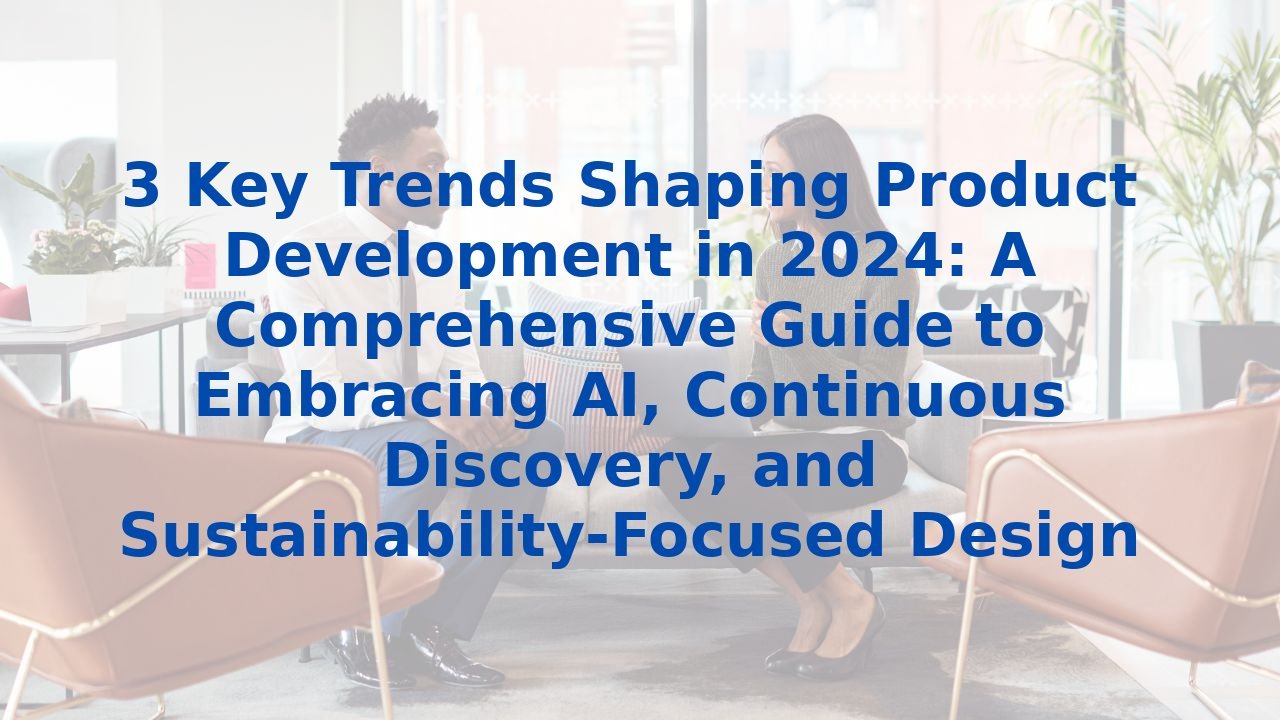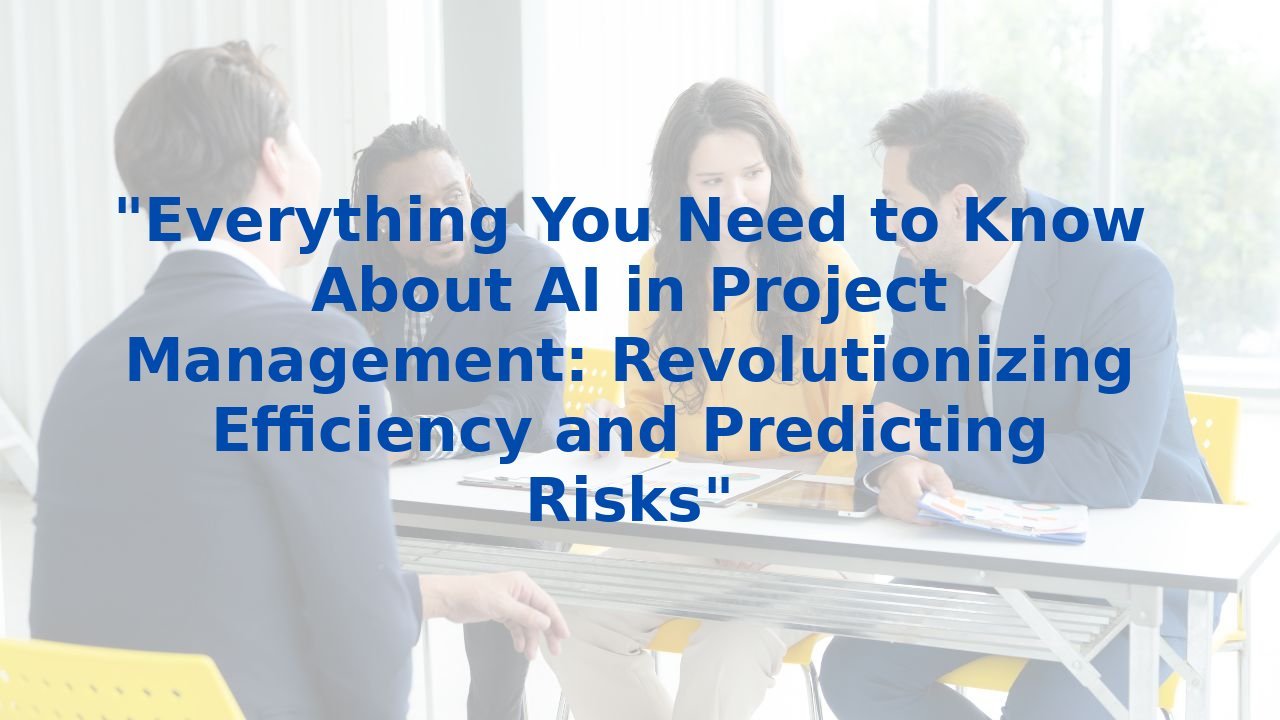3 Key Trends Shaping Product Development in 2024: A Comprehensive Guide to Embracing AI, Continuous Discovery, and Sustainability-Focused Design
3 Key Trends Shaping Product Development in 2024: A Comprehensive Guide
Introduction
Product development is entering a revolutionary era in 2024, greatly influenced by three pivotal trends: the integration of AI and automation, continuous discovery, and sustainability-focused design. Embracing these trends is not just an opportunity—it's an imperative for organizations aiming to propel innovation and sustainability forward. Let’s dive into how these elements are transforming the product development landscape and how AI enhances each process.
1. AI and Automation Integration
The integration of Artificial Intelligence (AI) and automation is a fundamental part of modernizing the product development journey. With advanced machine learning algorithms and automation tools, businesses can refine and streamline every stage of the product lifecycle, from the initial concept to the final launch.
How AI Enhances Product Development
Ideation and Concept Validation: AI analyzes extensive data from customer reviews, market reports, and social trends to unveil unmet needs. This data-centric method facilitates innovative product ideas and sharpens them into clear concepts.
Design and Prototyping: AI becomes an invaluable partner during prototyping by generating multiple design variations and analyzing user interactions with prototypes to ensure informed modifications before full-scale production.
Launch and Optimization: By personalizing marketing and product features through demographic data, AI insights shape effective product launches, while ongoing user feedback helps adapt products responsively.
Benefits of AI Integration
- Greater Efficiency and Speed: Automating mundane tasks allows teams to devote time to creativity and strategy, streamlining the workflow and facilitating faster development cycles.
- Improved Decision-Making: AI's ability to gather insight from market data boosts the chances of successful product launches and minimizes pitfalls.
- Enhanced Innovation: AI's data capacity fuels deeper understanding of consumer preferences, leading to the creation of products that resonate more with users.
2. Continuous Discovery
Continuous discovery signifies a shift from a one-off assessment to an ongoing evaluation of user feedback and market conditions. This approach is crucial for maintaining a competitive edge.
How Continuous Discovery Works
User Feedback Analysis: AI tools excel at processing extensive user feedback data, providing actionable insights that help inform product direction.
Market Intelligence: AI analyzes competitor standings and industry trends, enabling product managers to refine their feature prioritization and strategic decisions.
Real-Time Insights: Utilizing AI for real-time analysis ensures products evolve alongside consumer needs, making updates and modifications timely and relevant.
Benefits of Continuous Discovery
- Streamlined Product Development Lifecycles: Adopting continuous discovery significantly decreases time-to-market and aligns product offerings with user expectations.
- Enhanced Customer Satisfaction: Tailored user experiences foster loyalty and satisfaction, driven by AI’s capabilities to interpret feedback and pivot offerings accordingly.
3. Sustainability-Focused Design
With a growing emphasis on sustainability, companies are re-evaluating their design philosophies. AI aids this transition by optimizing resources and predicting market trends.
How AI Enhances Sustainability
Resource Optimization: Using historical data, AI forecasts future project needs, thus mitigating waste and optimizing resource allocation.
Predictive Analytics: AI identifies emerging consumer preferences, guiding more eco-conscious design decisions—elevating sustainability from an afterthought to a core attribute.
Design Optimization: AI can generate and assess numerous design iterations rapidly, considering sustainability metrics from the get-go.
Benefits of Sustainability-Focused Design
- Reduced Environmental Impact: By prioritizing sustainability in design, companies not only lessen their carbon footprint but also align their business practices with contemporary expectations.
- Competitive Advantage: Pioneering sustainability-focused designs sets companies apart, fostering loyalty and a strong brand image.
Conclusion
The integration of AI, continuous discovery, and sustainability-focused design are key drivers of innovation in product development for 2024 and beyond. Embracing these trends equips organizations not only to navigate a rapidly changing market but also to cultivate an environment of lasting value and sustainability.
Why AI Training Matters
For organizations to truly capitalize on these advancements, training employees in AI is essential. A skilled workforce that understands AI’s capabilities can:
- Enhance Efficiency: Staff trained in AI can automate tasks effectively, unlocking the potential for innovative and strategic pursuits.
- Improve Decision-Making: Understanding AI enables employees to analyze data proficiently, informing product strategies that resonate with market demands.
- Exude Adaptability: Familiarity with AI tools ensures rapid responsiveness to evolving trends, keeping teams agile.
- Foster Innovation: A workforce equipped with AI skills invigorates a culture of innovation, leading to groundbreaking products and enhancements.
By embracing these transformative trends and investing in AI training, organizations can enhance their product development processes and create sustainable, market-responsive products that resonate with consumers today.



